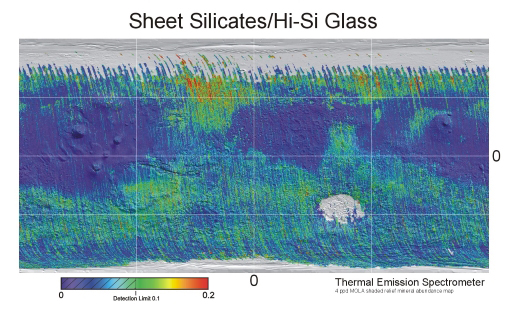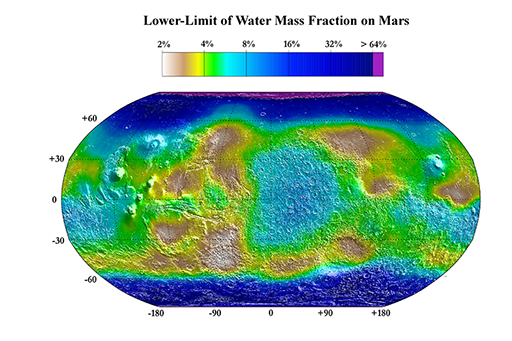Mars Odyssey
Mars Odyssey’s Thermal Emission Imaging System (THEMIS) mapped the distribution of minerals on Mars at a resolution of 100 m per pixel. This included clay minerals, which you will recall can only form if water is present. You can see a map of clay mineral distribution in Figure 25. This map is very exciting, because it can be combined with topographic maps showing stream beds and other landforms (Figure 26), to understand the types of environments in which the minerals might have formed.


In addition to THEMIS, Mars Odyssey also carries a Gamma Ray Spectroscope (GRS). This can detect gamma radiation produced when cosmic rays from space interact with elements in the rocks and soils on Mars. In particular, it can detect hydrogen, which in significant quantities could indicate the presence of water ice. Figure 27 shows that the GRS found high amounts of hydrogen at polar latitudes (dark blues and purples), but lower amounts distributed across the planet.

